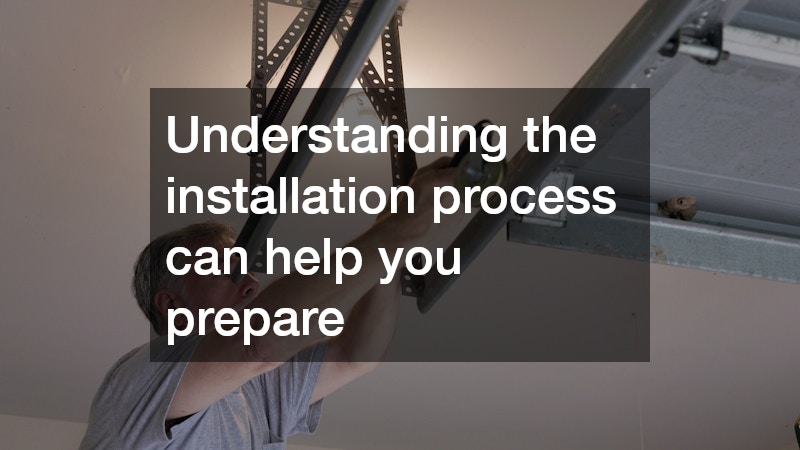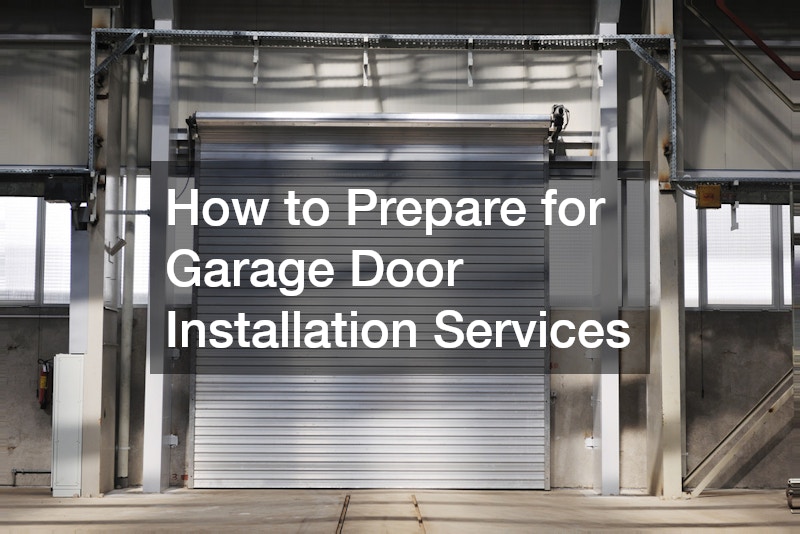There are a few key steps to take when preparing for garage door installation services to ensure a smooth and successful experience. Installing a garage door is not just about choosing a style; it’s a comprehensive process that involves various logistical and aesthetic considerations. Proper preparation can help avert potential issues that may arise during installation and will help ensure your new garage door meets your needs and expectations.
Factors to Consider When Choosing a Garage Door
Choosing the right garage door is crucial. Factors include materials, styles, insulation properties, and security features. The material of your garage door affects its durability, maintenance needs, and overall appearance. Options such as wood, steel, aluminum, and fiberglass each have unique characteristics that may be more suitable for your specific environment and budget.
Style is another significant factor to consider. Traditional, modern, carriage house, and contemporary styles will impact the visual appeal of your home. It’s important to select a style that complements the architecture of your property while also reflecting your personal taste. Customization options allow homeowners to achieve their desired aesthetics and functionality.
Insulation properties also play a vital role in energy efficiency and comfort. Insulated doors can help regulate the temperature inside your garage, which can be especially important if this space is used for more than just parking your car. Consider the thermal resistance, or R-value, of the garage door to determine how well it can insulate your space from outside temperatures.
How to Measure Your Garage Door Opening
Accurate measurements are essential. Understanding how to properly measure the width, height, and depth of your garage door opening is essential. Begin by using a tape measure to determine the width of the opening. It is crucial to take measurements at the top, middle, and bottom of the opening to ensure consistency and accuracy.
Next, measure the height of the door frame. Measure from the floor to the top of the opening at both the left and right sides to confirm that the height is uniform. Variations in height can impact the fitting of your new door and should be addressed prior to installation day.
Lastly, understanding the depth of your garage can help determine the type of door you can accommodate, especially if you’re considering certain styles that may require more or less depth. Keep in mind any obstructions like shelving or beams that may affect the installation. If you have any doubts about your measurements, consulting with professionals can help ensure accuracy.
What to Expect During the Installation Process
Understanding the installation process can help you prepare. It’s important to know what to expect on the day of installation, including timelines and potential disruptions. Generally, the actual installation of a standard garage door can take a few hours, but complex systems may require additional time. Ensuring the installation team has clear access to the garage will streamline this process.
During the installation, you will see various stages, including removal of the old door (if applicable), preparation of the opening, and the actual fitting of the new door. You’ll want to stay clear of the work area for safety reasons, as installers will be using tools and heavy materials. They must have adequate workspace to ensure they can perform their tasks efficiently.
Communication is key during the installation process. Keep open lines with the installation team, and don’t hesitate to ask questions about what they’re doing and why. They should also provide information on any potential disruptions, which might include noise, movement of vehicles, or temporary limitations on garage access. Being informed will help you manage your day accordingly.
How to Maintain a New Garage Door After Installation
Proper maintenance enhances the longevity of your new garage door. These tips on routine maintenance and upkeep can help to prolong the life of your door. Start by regularly inspecting the door for any signs of wear or damage. Look for frayed cables, faulty springs, or wear on the tracks that may indicate a need for immediate attention. Regularly checking for these issues can prevent major problems down the line.
Lubrication is essential for maintaining smooth operation. Use a silicone-based lubricant to grease hinges, rollers, and tracks. This prevents rust and ensures your garage door operates quietly and efficiently. Avoid using grease, as it can attract dirt and debris, leading to more complications in the long run.
Lastly, make sure to maintain the aesthetic appearance of your garage door. Clean the door’s surface regularly with mild soap and water. This helps prevent corrosion or fading, especially for doors made from materials that are susceptible to the elements. Regular cleaning paired with timely repairs can significantly extend the life of your garage door.
By considering these aspects, you can effectively prepare for your garage door installation and enjoy a seamless process from start to finish. The right preparations will not only save you time but also enhance your overall satisfaction and minimise unexpected challenges. Taking the time to plan and educate yourself thoroughly will ensure you enjoy your new garage door for years to come.

